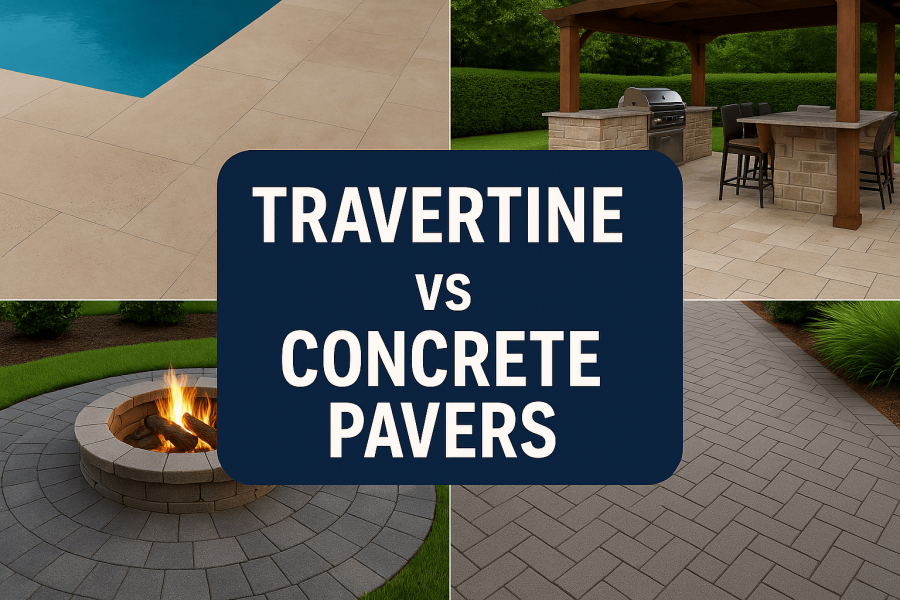- >
A Guide to Choosing Perennials for your Florida Garden
- By: Cheli Scott
- Date: Dec 29 2022
Similar Articles
Artificial Turf vs Sod for Lawns, Backyards & DIY Makeovers
Thinking about artificial turf or sod? Discover the pros and cons of each—from cost and maintenance to durability and pet-friendliness—so you can choose the best option for your lawn or backyard project.
Travertine vs Concrete Pavers for Florida Pool Decks, Patios, Fire Pits & More | bhild
Compare travertine and concrete pavers for Florida pool decks, patios, and driveways — from heat retention and slip resistance to cost, maintenance, and curb appeal.
Beat the Heat: Florida Summer Landscape Survival Guide
Beat the Florida heat with smart summer landscaping. From drought‑tolerant plants to shaded retreats, this guide covers designs, materials, and maintenance tips to keep your yard thriving all season long.
A guide to choosing perennials for your Florida garden
For the low maintenance gardener we’ve created a guide to choosing perennials for your Florida garden. Perennial plants beautify your landscape without the hard work of replanting every year, making them ideal for the mild climate of Florida and the casual gardener.
There are many options to choose from when picking perennial plants, so we’ve put together a list of popular plants that are known to grow successfully in Florida to get you started.
This is by no means an exhaustive list, but will help you identify some of the most common perennials you will see in the garden center. You don’t have to be a master gardener to have a beautiful perennial garden.
What are perennial plants?
Unlike annual plants, which die off every year, perennial flowers only die back, returning in the spring to your garden to bloom. This makes them very hardy and a good investment in your landscape. Not all perennials are evergreen, but many are, providing lovely foliage through the winter months.
Why choose perennial plants
Perennial plants tend to be low maintenance, hardy plants that may only require a little pruning to keep looking neat. While they are more expensive many are maintenance free and thrive in less than ideal conditions. They also tend to be drought resistant, making them good for Florida’s summers.
What to look for at your garden center when selecting perennials
Container grown perennials
When you are buying perennial flowers, keep in mind you are investing in a plant that will last a few years at least. Think about where you want to put them before you buy, because they will be there for some time. Ask yourself if the plant you are looking at requires shade or full sun and whether or not it needs well drained or swampy soil conditions.
Inspect them carefully for pests or damage. Look at leaves to make sure they haven’t been chewed on, indicating there is a pest attacking the foliage and possibly living in the soil. Also check the root ball to make sure roots are white and healthy. Black or slimy roots are suffering from root rot. Select plants potted in moist, but not overly wet soil.
Shopping for bare root perennials
Often perennials come packaged without soil. These are called “bare root” perennials and you may come across them at your garden center or if you buy plants online. These plants are stored and shipped in their dormant state so they can be planted and “wake up” in spring time.
Choose perennials with firm, thick roots. Plant them as soon as you get them home in your spring garden as long as there isn’t a freeze after soaking the roots.
How to care for perennials
Many perennials tend to be low maintenance, but they are living things and require some attention. Research your individual plants for their unique growing instructions. Even perennials die eventually, but with proper care many gardeners have lots of success with perennials in Florida.
Watering
Generally, water your perennial flowers regularly keeping the soil moist, but not overly wet or dry. There is no blanket answer for how much you should be watering so be sure to look into what is necessary for your plant’s needs. Some plants grow in surprising soil conditions.
Mulching
Mulch around plants to retain moisture and protect roots from temperature changes in the winter and late fall when the ground freezes. You will also want to cover plants with mulch during a cold winter to protect them.
Pruning
To stimulate your flowers to continue blooming, prune wilted flowers and any leggy branches. If you want to attract birds to your perennial patch or create an interesting winter feature, you can leave the seedheads of plants like coneflower and clematis.
You may want to cut back some perennials when they die back in the fall for aesthetic reasons, but it is not necessary. Dead leaf drop adds organic matter to the soil and doesn’t hurt the plant. Always prune plants with diseased or damaged foliage and dispose of those leaves in the trash, not in your compost.
Fertilization
Perennials tend to require little fertilization. Applying compost in the spring should be enough to feed them during the growing season. If you require additional fertilizer due to your soil conditions consider a slow release formula.
Some perennial flowers’ stems actually become floppy from too much fertilizer and many thrive in lean conditions, so research before you decide to fertilize. You may not have to!
Dividing
Most perennials can be divided, producing new plants you can add to your garden. Divide and plant perennials in the spring and fall, unless you have one of the rare exceptions that need to be divided in the summer like hosta and coneflower.
Perennial flowers to brighten up your garden
Perennials provide a beautiful pop of color in early spring and summer in your Florida garden. Perennial grasses provide attractive ground cover in the cold season. In south Florida many of these flowers bloom year around. Below we’ve listed some beautiful examples of perennial flowers that you can try in your garden!
Hibiscus
Hibiscus is a classic tropical perennial with an iconic bloom. These perennial flowers can grow up to eight feet tall. These tall perennials prefer full sun and moist to well drained soil. There are wetland native varieties that will even do well in wet soil. Hibiscus blooms are large and colorful, opening in the summer and fall, though in south Florida they can bloom year round.
Blanket Flower
Most Florida natives are familiar with blanket flower. It is a common Florida plant that has a spreading habit and grows quickly. Blanket flower blooms are unique and come in a starburst of red and orange. They grow well in poor, slightly acid soil in full sun. Blanket flowers look beautiful blooming in the summer and fall.
Coreopsis
Coreopsis is the official state wildflower of Florida so it is an appropriate perennial for a Florida garden. Their fluffy blooms come in white, orange, and red. These flowers require well drained soil and full sun to thrive. If you deadhead these plants they will bloom a second time in the growing season.
Gerbera
These showy daisies come in many bright colors to add to your garden. Fortunately for many Florida gardeners, these pretty flowers grow well in the sandy soil of north Florida. Gerbera love well draining soil and should be allowed to dry out between watering. Clipping dead flowers encourages more to bloom during the summer months.
Lavender
Lavender is a fragrant, beautiful perennial that attracts pollinators to your garden. It likes dry, well drained soil and full sun, making it a very drought tolerant plant. You can continue to divide lavender year after year to keep it going and establish a long lasting patch in your yard.
Growing perennials
Growing perennials is a fun, low maintenance garden project you can do yourself. However, if you need help trimming perennial shrubs, mulching, or other gardening tasks, don’t hesitate to call a professional like the ones at bhild.com. Call us today, or fill out our form here for a free estimate on lawn services!



















